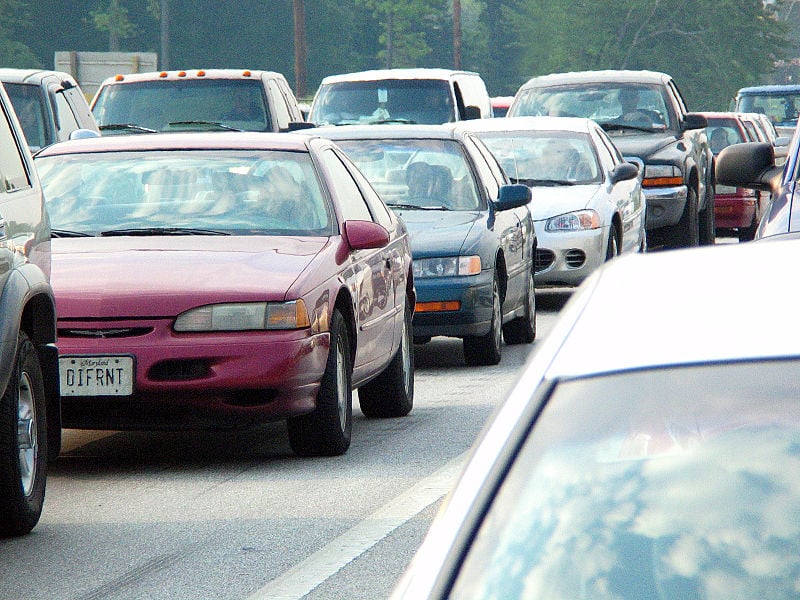I think it’s silly: There are people who get all worked up over the mention of light rail and/or streetcar transit. What appears to get their gooses more than anything else is the thought of unsightly overhead catenary wire (the electrical distribution system for powering such networks – hint: there are some that operate catenary-free through a process known as electromagnetic induction propulsion, which is also zero-emissions or an emissions-free technology) as a form of blight brought to places said infrastructure exists. As if polluted air itself isn’t blight, you know the kind that block or obstruct or obscure from view distant or even nearby vistas. I can only think of one word that sums this all up: pooh.
Light rail/streetcar transit: What’s not to like?!
During my two-thirds-of-a-century of existence here on Earth I have seen it all. Where transportation and travel are concerned, yeah, I’ve been around, let me tell you. I even, for a time, worked in the railroad industry. And, every job that I have ever worked involved transportation or travel in one way or another. It just came with the territory.

Now I don’t know how many people enjoy sitting in traffic but I, for one, do not relish the idea one bit. So, when someone comes along and proposes a way to circumvent that nuisance notion, they sure have my attention.
Which reminds me of the transportation charrettes, seminars, workshops I’ve attended over the years.
One in 2012 had to do with participants coming up with ways to reduce city GHGs or greenhouse gas emissions. There were a variety of suggestions offered. Everything from hiking/biking trails to extensive use of electric motor vehicles charged by, of all things, wind turbines (this would have been a laudable idea if in the area I live in, which by the way, has some of the worst air pollution in all of America – uh, that’d be Fresno, California, was an area where wind is a regular feature; it isn’t, which would explain why Fresno has the air pollution problem it has) to light rail transit (an idea I brought to the table that, for one individual, elicited, evoked an angered look that just wouldn’t quit, or so it seemed. If I hadn’t seen it, I wouldn’t have believed it. What have people got against sound, viable ways of clearing the air?! I don’t get it! What?!).
That all said, I’m flummoxed that rather than making the switch to rail-based transit, some folks would consciously choose to be stuck in gridlocked or congested traffic, and while doing so, being exposed to (if you’ll pardon the expression) healthy doses of pollution emanating from the tailpipes of the gridlocked vehicles, these very same pollutants contributing to the sullied air many a city has. As for those who refuse to choose a rail-based transit alternative, could that refusal stem from their not wanting to give up the personal freedom that the car affords one I wonder, or could there be something else entirely coming into play here like said persons being card-carrying members of the NIMBY (not-in-my-back-yard) club?
At any rate, in the San Joaquin Valley, of which Fresno is a part, I tell people that our best hope of getting rail-based public transportation options like light rail transit or streetcars is through or prompted by the presence of high-speed rail. I don’t see any evidence that tells me otherwise. In other words, if we were going to have such, we would have it already and we don’t.
I don’t like polluted air any more than the next person. But, I refuse to put up roadblocks to or display an angry facial expression at the suggestion of bringing light rail and/or streetcar transit to my community. We may not have it now and recent generations might possess little knowledge or experience riding this type of transit, but that doesn’t mean that such should be forever shunned from city streets. I just read an article today in The Fresno Bee about how Fresno still doesn’t meet certain air quality health standards and how, in this regard, citizens can weigh in offering suggestions like the one or two I mentioned here to help change that. If I recall correctly, the acronym CAPP for Clean Air Protection Program appeared. Not surprisingly, in the article in question, there was no mention whatsoever of any of what I said here.
I’ve said it before and I’ll say it again: The transportation sector is the single biggest contributor in California of air pollutant emissions.
Being this is the case, I’d hate to see an air-improvement strategy like light rail or streetcar transit, in this area particularly, pass us by or, in other words, be a missed opportunity.

Images: U.S. Census Bureau (upper); Alstom (middle); Oliver Brown (lower)
This post was last revised on Jun. 3, 2020 @ 6:41 a.m. Pacific Daylight Time.
– Alan Kandel
